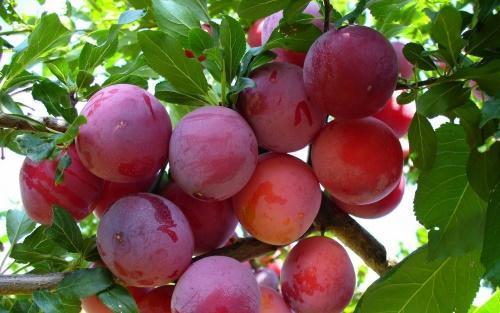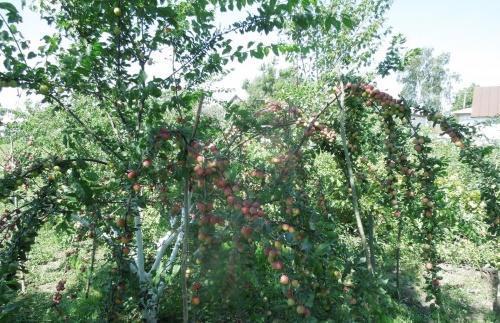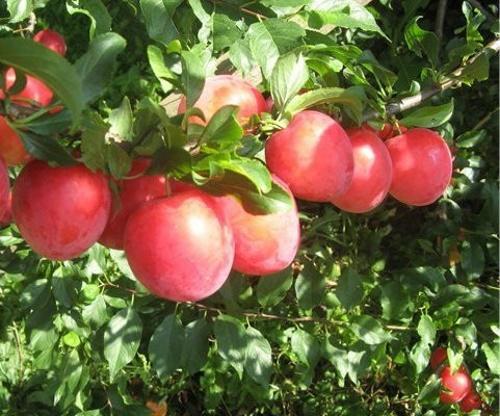Early ripe cherry plum July rose: varietal features
 Compared to wild, small and sour cherry plum, selection hybrid varieties are an order of magnitude higher. By crossing various species, scientists have bred a cherry plum that is not inferior to our garden plum in terms of fruit size and taste characteristics, while being resistant to frost and most diseases. One of the most popular representatives of large-fruited varieties is the July rose cherry plum.
Compared to wild, small and sour cherry plum, selection hybrid varieties are an order of magnitude higher. By crossing various species, scientists have bred a cherry plum that is not inferior to our garden plum in terms of fruit size and taste characteristics, while being resistant to frost and most diseases. One of the most popular representatives of large-fruited varieties is the July rose cherry plum.
The parent of the July rose is the Kuban comet cherry plum, which passed on to it most of its best qualities, and Chinese plum.
Botanical characteristic
Description of cherry plum variety July rose should start with the fact that it is an early ort with compact tree size. Its crown is rounded and slightly flattened, the thickening is average. The branches are horizontal, branching weakly, the central trunk is even. The leaves are large, oval-shaped, more than 6 cm long, with jagged edges.
The variety is partially self-fertile.
Taste qualities
In the middle of spring, the tree is covered with white fragrant inflorescences, and closer to the middle of summer, yellow fruits with a pink tint ripen, covered with a light bloom. The weight of one cherry plum exceeds 30 g, the skin is dense, the yellowish pulp is sweet and sour. The crop ripens unevenly; fruits should be harvested in several passes.
The stone grows tightly into the juicy pulp, and it is difficult to remove it, however, this is typical for all types of cherry plum.
Benefits of the variety
Gardeners who have opted for the July rose will not regret it, since the variety has a number of advantages, namely:
- the first harvest can be tasted after the third year of life;
- cherry plum ripens already in June;
- the yield is good and annual;
- cherry plum is large enough for its species;
- the variety is resistant to disease and frost;
- compact size makes it easy to care for the tree and harvest.
Growing features
It is better to start planting seedlings in the fall, adding humus and potassium-phosphorus fertilizers to the planting pit. The cherry plum should be formed in the summer, shortening young long branches. When growing in the northern regions, the crown should be formed more dense, otherwise there is a risk of freezing of the shoots. 10 years after planting, it is necessary to rejuvenate the cherry plum.